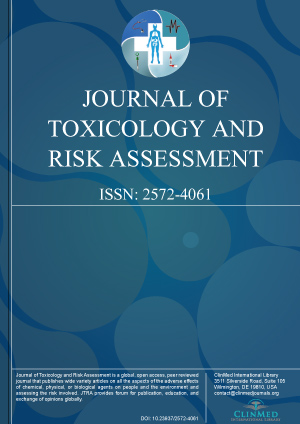Open Access DOI:10.23937/2572-4061.1510042
Biochemical Changes in Hematological and Liver Parameters in Albino Rats Exposed to Azo Dye Adulterated Palm Oil
Kola-Ajibade Ibukun R, Jegede Rotimi J and Olusola Augustine O
Article Type: Original Article | First Published: December 26, 2021
In West Africa, the manufacturing and processing of palm oil are done on a small, medium, and large scale, it is therefore almost impossible to detect fraud in the system. A major disadvantage associated with the use of adulterants in palm oil is that the adulterants have not undergone adequate research and the degree of health hazards they can pose to humans when consumed. This study was designed to evaluate the toxic effects of azo dye adulterated palm oil on hematological and liver parameters...
Open Access DOI:10.23937/2572-4061.1510041
Effects of Azo Dye Adulterated Palm Oil on the Expression of Inflammatory, Functional, Antioxidant Markers and Body Weights in Albino Rats
Kola-Ajibade Ibukun R, Atere Grace and Olusola Augustine O
Article Type: Original Article | First Published: December 25, 2021
Food is important to life and the continuous exposure to food throughout an individual’s lifetime renders diet the most important environmental factor challenging the biological system. Only few studies exist for evaluations of the toxicological effects of adulterated palm oil on biochemical parameters. This study was undertaken to evaluate the expression of the activity of inflammatory enzymes (TNF-α, MCP-1), antioxidant enzymes (GPx-1, CAT) and functional markers (EPO, ALB, CRIM) in liver, ...
Open Access DOI:10.23937/2572-4061.1510039
Toxic Metal Profiles, Carcinogenic and Non-Carcinogenic Human Health Risk Assessment of Some Locally Produced Beverages in Nigeria
Odangowei I Ogidi, Uchechi E Enenebeaku, Ebifanimi Okara and Stephanie A Elumelu
Article Type: Research Article | First Published: June 07, 2021
Toxic metal contamination is a major problem of our environment and they are also one of the major contaminating agents of our food supply. The knowledge of metals in foods is essential for calculating the dietary intakes of essential metals and evaluation of human exposure to toxic elements. The aim of this study was to assess the toxic metal profiles, carcinogenic and non-carcinogenic human health risk of some locally produced beverages in Nigeria. Seven (7) samples of locally produced beverag...
Open Access DOI:10.23937/2572-4061.1510038
Science Advisory Panels: Results of a Survey of Panel Participants
SM Hays, RA Becker, DM Nelson and CR Kirman
Article Type: Commentary | First Published: May 10, 2021
Science panel deliberations serve as an important step in policy and regulatory decision making, ideally providing independent validation that the decisions under consideration are based on sound scientific evidence and interpretation. To be useful, the findings from a science panel should be trusted by all parties involved (e.g., regulatory decision makers, participating scientists, general public, regulated industries). A survey was conducted of scientists who had participated in science advis...
Open Access DOI:10.23937/2572-4061.1510037
Serum Glucose, Bilirubin, Liver Enzymes, Renal Parameters, Protein Profile and Some Electrolytes in Adult Male Domestic Rabbits Intoxicated with Chlorpyrifos
Maged M Yassin, Tareq O Adas and Mohammed M Yasin
Article Type: Review Article | First Published: March 05, 2021
Chlorpyrifos is a broad-spectrum chlorinated organophosphate pesticide with a multipurpose use worldwide. However, its use and/or misuse could put a real threat on non-targets including humans and domestic animals. To assess the toxic effect of chlorpyrifos on serum glucose, bilirubin, liver enzymes, renal parameters, protein profile, and some electrolytes in adult male domestic rabbits. The oral LD50 of chlorpyrifos was determined, and then a daily dose of 1/10 LD50 was given orally to rabbits ...
Open Access DOI:10.23937/2572-4061.1510036
Recent Advances on Renal Toxicity of Engineered Nanoparticles-A Review
Suresh VS Rana
Article Type: Review Article | First Published: January 22, 2021
Kidney is considered as the secondary target organ of nanoparticle (NP) toxicity. Since it is the primary organ of excretion, NPs are expected to adversely affect the renal system. Therefore, a comprehensive review of recent knowledge on renal toxicity of engineered nanoparticles (ENPs) was made. Mechanistic paradigms of their toxicity have also been discussed. In vitro and in vivo studies indicated that carbon nanotubes (CNT) caused cytotoxicity, glomerular degeneration and proximal tubular nec...

